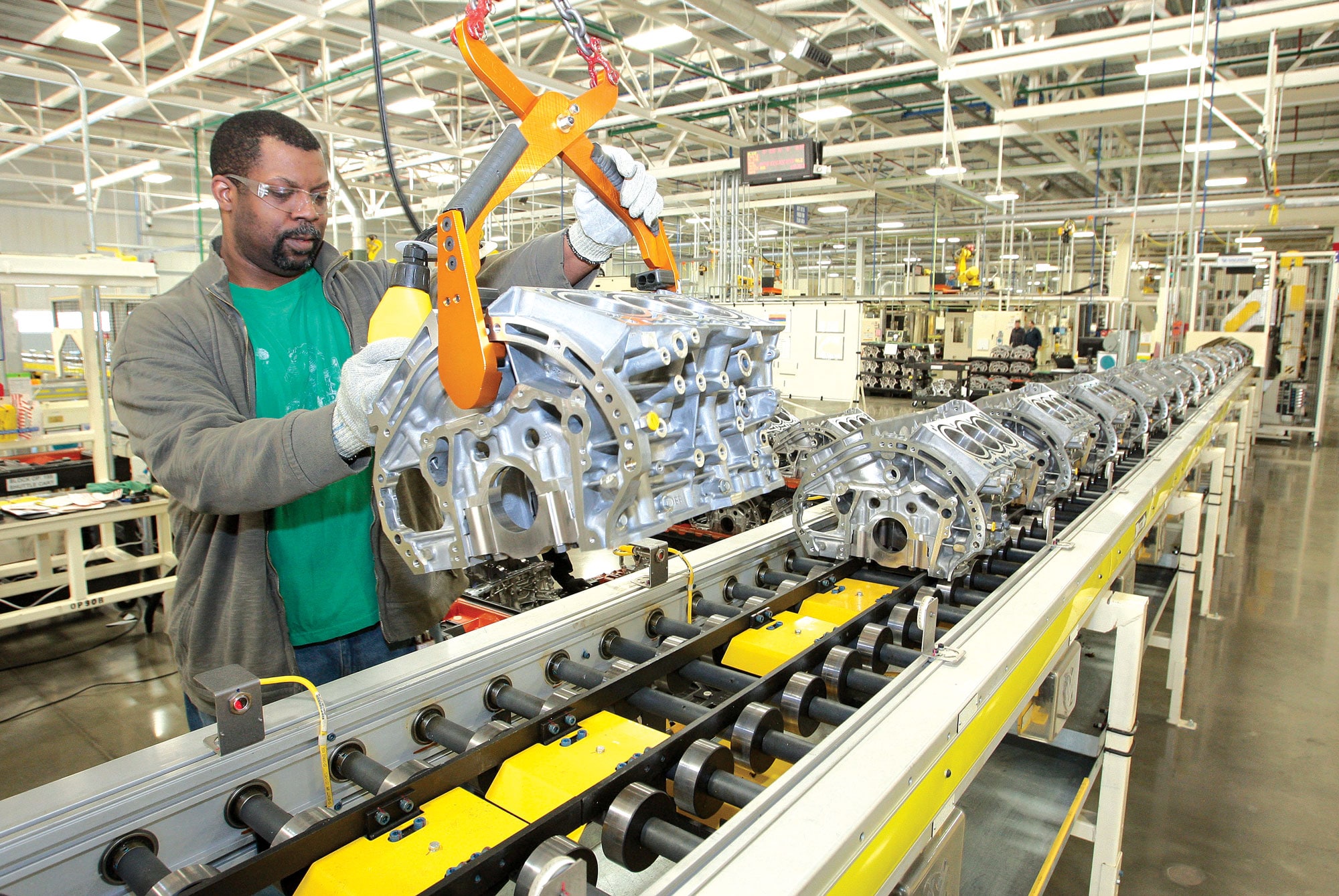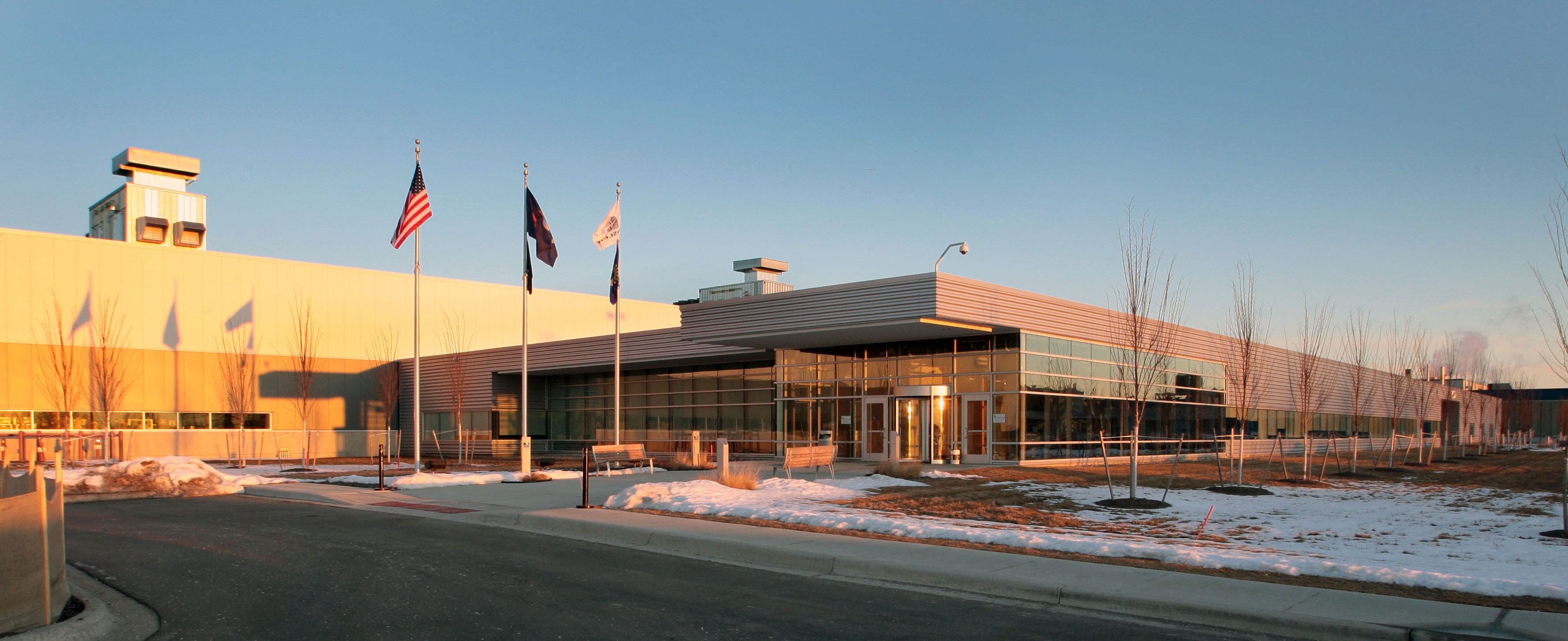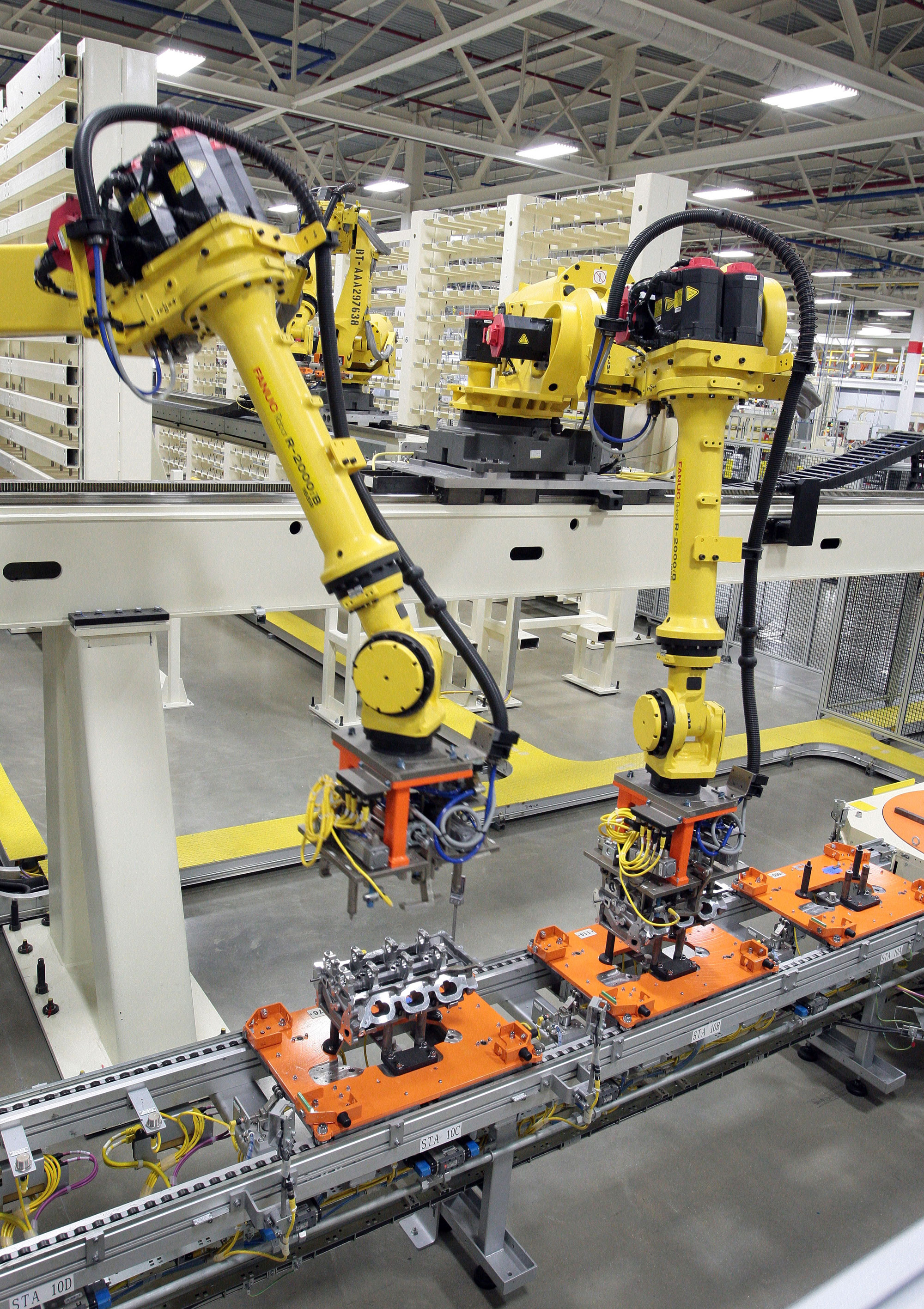
[Photo: Courtesy of FCA US]
Trenton South Engine Plant: 822,000 square feet
Belvidere Assembly Plant Body Shop: 638,000 square feet
A decade ago, truly green manufacturing was just beginning to gain steam—but Fiat Chrysler Automobiles (FCA US) wasn’t waiting around for the times to catch up to its vision. In 2007, the company announced it would invest some $730 million into a new, more fuel-efficient engine—the 3.6-liter Pentastar V-6, an engine found in everything from Jeep Wranglers to Dodge Chargers. But they weren’t about to invest that much in a groundbreaking engine without investing equally in where and how the engine would be made.
The where—a Trenton, Michigan former brownfield site—as well as the how—creating a facility that meets the rigorous LEED Gold certification process—provided an unprecedented opportunity for FCA to create a symbolic bridge between industries of the past and the new direction of manufacturing today. “At the time of Trenton’s certification, not many industrial facilities had achieved LEED,” says Eric Goedtel, FCA US Manufacturing Engineering Construction and LEED AP. “When first conceived, the objective was to build a state-of-the-art manufacturing environment that would be a benchmark for all other engine manufacturing facilities.”

FCA’s commitment to LEED facilities continues, including progressive plants in Michigan and Illinois. [Photo: Courtesy of FCA US]
Admittedly, being pioneers in the movement was not without its difficulties, principal of which was learning just how to approach the build. “With the exception of one of the architects who had worked on a LEED commercial project, no one on the project team had ever completed a LEED industrial project,” Goedtel says.
Although the team—architect/engineering firms BEI Associates, Inc. and Harley Ellis Devereaux and construction management firm Walbridge—had to start from scratch on things like creating a baseline and energy model to measure how much energy they might save, they were able to work through the kinks. “Unlike commercial projects, it is not easy to compare one industrial building or process directly to another due to the uniqueness of the products and processes,” Goedtel says.
Starting with energy use, FCA worked to make their processes more efficient, added building ventilation systems that would provide a more comfortable work environment for employees, and reviewed building materials closely to find specific items high in recycled and locally sourced content. They also looked at their waste streams, determining how to eliminate materials from landfill through recycling programs and through separation of waste streams within the new facility. Goedtel says they were surprised by how many aspects of building design needed to be factored into creating a sustainable working environment. “For example, building ventilation and occupancy comfort are a big part of the LEED requirements and are often overlooked as valuable to sustainable design. Creating a work environment for the occupants that is hospitable and productive is just as important as generating energy or water savings.”

[Photo: Courtesy of FCA US]
Thanks to smart design and increasing the efficiency of their processes, the team was able to reduce the Trenton South Engine Plant’s annual CO2 emissions by 12,000 metric tons. They were also able to reduce energy use by about 39% annually, saving FCA $1.25 million every year. The facility achieved LEED Gold in 2010, becoming one of only four auto manufacturing facilities to receive a LEED rating, and the only engine manufacturing facility in the world to receive the award. In 2014, FCA achieved a bronze award in world-class manufacturing. “The project showed how a team of people can work together to create a new facility that challenges convention and delivers an end result that is sustainable for the environment,” Goedtel says.
FCA took the lessons learned from this success and applied them to three new facilities, too, including the Marysville Axle Plant in Michigan, the Belvidere Assembly Plant Body Shop in Illinois, and the Sterling Heights Assembly Body Shop in Michigan—all of which have received LEED Gold. The Belvidere plant, in particular, was an achievement. Earning LEED Gold in 2015 with the help of NSA Architects, Engineers, Planners and Alberici Constructors, this 638,000-square-foot body shop was also built on a brownfield site, connected to the existing assembly plant.
During construction, 95% of the waste was recycled and diverted from landfills and about 43% of the new materials were made with recycled content. Builders even reused concrete and asphalt pavement from roadways and parking lots by crushing and pulverizing them onsite. More than 90% of the building’s wood materials were FSC certified as well.

[Photo: Courtesy of FCA US]
The facility’s environmental impacts are further mitigated with its highly reflective white roof and light pavement hardscapes, reducing the heat-island effect, and its exterior lighting designed to reduce power density and nighttime light pollution.
Inside, water was a big focus, and the team was able to reduce potable water use by 22%, saving more than 61,000 gallons per year. Indoor air quality concerns led to choosing low-VOC products, and working environments were made even better with more exterior windows and daylight.
With reductions responsible for savings of more than $3 million per year, the new body shop proves manufacturing can and will move toward a more sustainable future—and doing so will be good both for the planet and for the balance sheet.
